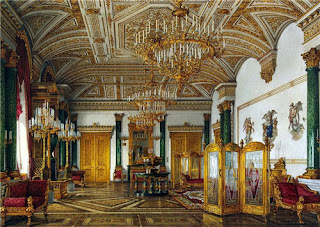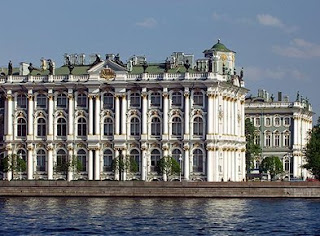
In order to extend the building's premises the Empress had to buy out all neighboring estates. Another reconstruction renewed immediately after next Empress, Elisabeth succeeded to the throne. She also entrusted the task to Rastrelli. Just then the Winter Palace that we know appeared at Palace Embankment of the Neva River. This magnificent structure in Baroque style generously decorated with arcs, columns and stucco soon became not only a mighty symbol of the Russian imperial power but also one of most famous Saint Petersburg features. Inhabitants of the city admired greatly this splendid Rastrelli's creation, the highest building in Saint Petersburg for that moment.
The Winter Palace was completed already after Elisabeth's death. Each next monarch added something new to the d'cor and layout of the palace. Under Catherine II the winter garden and the Romanovskaya gallery were arranged there, the ceremonial Georgiyevsky Hall was decorated. Nicolas I ordered to open the Gallery of Year 1812 representing 322 portraits of heroes of the Patriotic War. In 1837 the Winter Palace was almost utterly destroyed by fire. Due to hard labors of architects V. Stasov and A. Bryullov the palace was restored only two years later though its d'cor and layout were changed in some places. Till nowadays only the Malachite salon decorated by Stasov remained unchanged.











0 comments:
Post a Comment